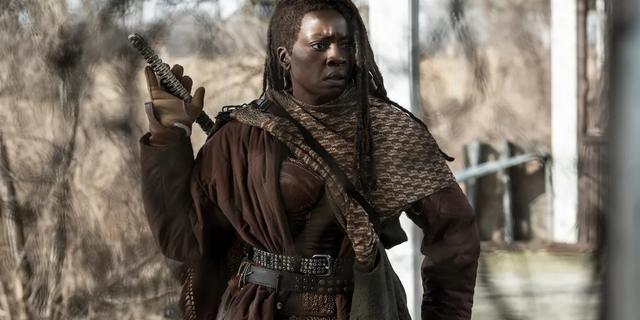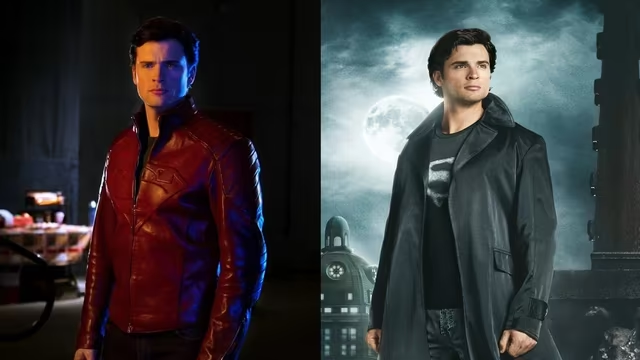If you click on a link and make a purchase we may receive a small commission. Read our editorial policy.
Supergirl: Superman's cousin's tangled history and bright future
After decades of convoluted history, Supergirl is poised to become bigger than ever. Here's the long road to Supergirl's resurgence.

Of all the heroes in the Superman family, none have a more complicated history than Supergirl. Created by Otto Binder and Al Plastino in 1959’s Action Comics #252, the original Supergirl is Kara Zor-El, cousin to Kal-El who similarly is spared Krypton’s destruction by being sent to Earth. However, as DC’s policies around the destruction of Krypton changed in the ‘80s, subsequent versions of Supergirl radically redefined the character and her place in the DC Universe.
In the ensuing decades, the classic Supergirl has been restored to modern continuity and prominently appears in multimedia adaptations of Superman, including starring in her own live-action television series. More recently, the character memorably appeared in 2023’s The Flash, and a new version of the character will be starring in a planned feature film as part of DC Studios CEOs James Gunn and Peter Safran’s DCU.
Here’s everything you need to know about Supergirl, including all the major revisions to her character and her future as one of the leading heroes in the cinematic DCU.
The cousin from Krypton

Kara is the daughter of Zor-El, Jor-El’s younger brother living in the Kryptonian settlement of Argo City. Though Argo City survives Krypton’s destruction thanks to a climate shield protecting it, its inhabitants are eventually exposed to green kryptonite lethally radiated by the cataclysmic event that consumed their planet. In order to save their daughter from kryptonite poisoning, Zor-El and his wife Alura sent Kara on a rocket to Earth to be raised by her cousin Kal-El, now fully grown and defending the DCU as Superman.
Thanks to her Kryptonian physiology, Kara gains all the powers that her cousin uses as Superman and decides to follow in his footsteps by creating the superhero mantle Supergirl. Kara takes on the human alter ego Linda Lee Danvers, taking her foster parents’ surname, and holds a myriad of civilian jobs, including television reporter and soap opera actor. A hit with comic book readers, Supergirl took the lead feature position in Adventure Comics, starting with 1969’s issue #381, in addition to starring in a number of spinoff titles in the ‘70s and ‘80s.
Kryptonian no more

During the 1985 crossover event Crisis on Infinite Earths by Marv Wolfman and George Perez, Supergirl is killed, heroically sacrificing her life to save her cousin from the villainous Anti-Monitor. With DCU canon reset by the Crisis, it is determined that Superman should be the sole survivor from Krypton in the new continuity, truly becoming the Last Son of Krypton for a time. However, other non-Kryptonian versions of Supergirl would fill the vacant superhero mantle over the next two decades, all lacking the familial connection to Superman.
The first post-Crisis Supergirl appears in 1988’s Superman #16 by John Byrne, as a sentient protoplasm created by Lex Luthor. Initially implanted with Lana Lang’s memories and physical appearance, this Supergirl – known simply as Matrix – eventually takes on the blonde appearance more commonly associated with the character. In 1996’s Supergirl #1 by Peter David and Gary Frank, Matrix merges with a gravely wounded young woman Linda Danvers, saving her life and bonding with her to become a composite individual with Supergirl’s powers and appearance.
A third post-Crisis version of Supergirl is created by Steven T. Seagle and Scott McDaniel in 2003’s Superman: The 10¢ Adventure #1. A young woman resembling Superman claims to be his daughter from the future, referring to herself as Cir-El and possessing similar powers as him. In reality, this Supergirl is part of an elaborate scheme by Brainiac to defeat Superman, with Brainiac splicing Kryptonian DNA into a woman named Mia as part of his ruse. Discovering the truth, Cir-El sacrifices herself to prevent Brainiac’s plans from successfully coming to fruition.
The return of Supergirl

The strict stance on Superman being the only surviving Kryptonian softened nearly 20 years after Crisis on Infinite Earths, with Jeph Loeb and Michael Turner reintroducing the modern Kara Zor-El in 2004’s Superman/Batman #8. In her revised origin, Kara is sent to Earth by her parents to protect her infant cousin but, because being in a prolonged stasis, awakens to discover Kal-El a fully grown adult revered as Earth’s greatest hero. As a teenager with memories of Krypton and the world she lost, the modern Kara deals with the trauma of losing her home and everyone she once knew.
This trauma leads Supergirl to become the more edgy hero within the Superman family, even going as far as to become a member of the rage-fueled Red Lantern Corps during the DCU’s New 52 era. One of the more memorable comic book stories since Kara’s return is the 2021 miniseries Supergirl: Woman of Tomorrow by Tom King and Bilquis Evely. In this story, Supergirl celebrates her birthday alone on the other side of the cosmos, only to be roped into an extraterrestrial revolution and learn how to become an inspirational leader to the downtrodden.
The Power Girl situation

One version of Kara who holds her own unique superhero mantle, despite similarities in backstory, is Power Girl. Created by Gerry Conway, Ric Estrada, and Wally Wood in 1976’s All Star Comics #58, Power Girl is the Kara Zor-L of Earth-2, an alternate universe where DC’s Golden Age characters from the ‘30s and ‘40s reside. In this dimension, Kara is adopted by Clark Kent and Lois Lane after arriving on Earth, taking on the alter ego of Karen Starr and possessing the same powers as Superman.
In the wake of the post-Crisis edict making Superman Krypton’s sole survivor, Power Girl is retconned as being Atlantean instead of a Kryptonian, with her power set significantly reduced. In the lead-up to the 2005 crossover event Infinite Crisis, Power Girl’s Atlantean heritage is revealed to be a lie, with Kara’s backstory as the Kara Zor-L of Earth-2 restored in 2005’s JSA: Classified by Geoff Johns, Amanda Conner, and Jimmy Palmiotti. This effectively gives the DCU two versions of Kara in the modern Superman family, though Power Girl is slightly older than Supergirl and more closely associated with her fellow Golden Age heroes in the Justice Society of America.
Supergirl’s big screen future

Supergirl has seen something of a resurgence in live-action television and film within the past decade after an unsuccessful solo spinoff film from the Christopher Reeve Superman movies in 1984, starring Helen Slater as Kara. A Supergirl television series premiered on CBS in 2015, starring Melissa Benoist as the superhero. After moving to The CW for its second season, Supergirl is placed in the shared continuity of the Arrowverse, leading Supergirl to team-up with various heroes from other live-action shows, most notably Grant Gustin’s Flash.
After a nearly 40-year absence from the big screen, Supergirl returned to cinemas with 2023’s The Flash, played by Sasha Calle. This Supergirl is Superman’s cousin from an alternate timeline and seeks to avenge his death at the hands of General Zod only to be killed by Zod instead. Though the cinematic continuity of DC Studios’ films is reset with The Flash, Calle has since confirmed she has met with DC Studios CEOs Peter Safran and James Gunn about the possibility of reprising her role as Supergirl in the future.
And it’s this reset that positions Supergirl for even bigger cinematic prospects as part of DC Studios’ new canon, simply dubbed the DCU. Among the projects announced by Gunn and Safran is Supergirl: Woman of Tomorrow, a feature film in the DCU’s opening wave of projects. No cast or crew for the movie has been announced yet though, with a new Superman kicking off the DCU in 2025’s Superman: Legacy, more details about the project and its version of Supergirl could be tied to the upcoming film.
After years of going back and forth on Supergirl’s origin, relationship with Superman, and role in the wider DCU, Kara’s history and future appear to be firmly set. Benoist enjoyed a six-season run as Supergirl and Calle’s performance as the character is one of the stronger elements in The Flash. With Supergirl: Woman of Tomorrow serving as one of the cinematic DCU’s foundational projects, Kara has endured several bumps in the road to and become a fundamental part of the Superman mythos and its shared superhero universe.
The story behind that Nicolas Cage Superman cameo (and the spider) in DC's The Flash movie
Follow Popverse for upcoming event coverage and news
Find out how we conduct our review by reading our review policy
Let Popverse be your tour guide through the wilderness of pop culture
Sign in and let us help you find your new favorite thing.
















Comments
Want to join the discussion? Please activate your account first.
Visit Reedpop ID if you need to resend the confirmation email.